
Cirkit Designer
Your all-in-one circuit design IDE
Home /
Component Documentation
How to Use KY-015 DHT11 Temperature-Humidity sensor module: Examples, Pinouts, and Specs
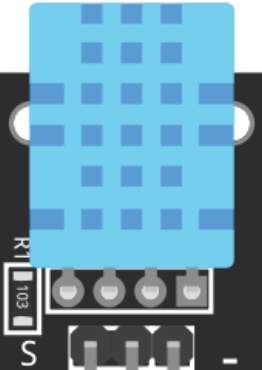
 Design with KY-015 DHT11 Temperature-Humidity sensor module in Cirkit Designer
Design with KY-015 DHT11 Temperature-Humidity sensor module in Cirkit DesignerIntroduction
The KY-015 DHT11 Temperature-Humidity Sensor Module is a versatile and easy-to-use sensor that measures both temperature and humidity. It utilizes the DHT11 sensor to provide digital output of the temperature and humidity readings, making it straightforward to interface with microcontrollers such as the Arduino UNO. This module is widely used in weather stations, environmental monitoring systems, and home automation projects.
Explore Projects Built with KY-015 DHT11 Temperature-Humidity sensor module
ESP32 and DHT11 Wi-Fi Connected Temperature and Humidity Web Server
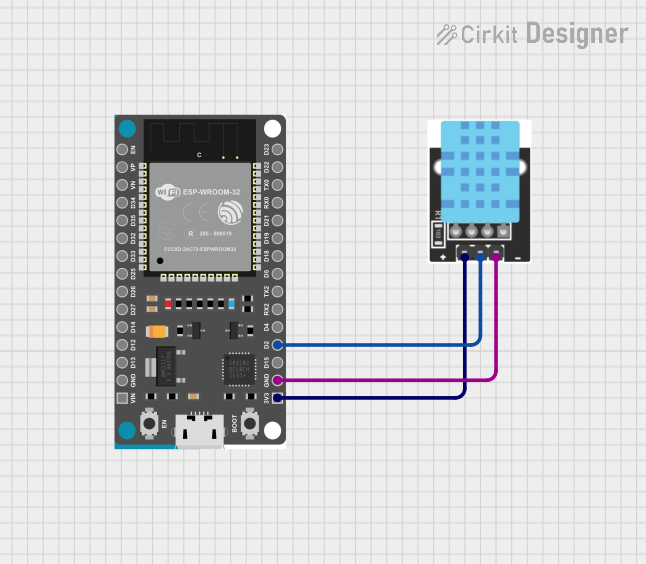
This circuit consists of an ESP32 Devkit V1 microcontroller connected to a KY-015 DHT11 Temperature-Humidity sensor module. The ESP32 reads temperature and humidity data from the DHT11 sensor and serves this data via a web server, allowing remote monitoring over WiFi.
 Open Project in Cirkit Designer
Open Project in Cirkit DesignerArduino UNO with DHT11 Temperature and Humidity Sensor
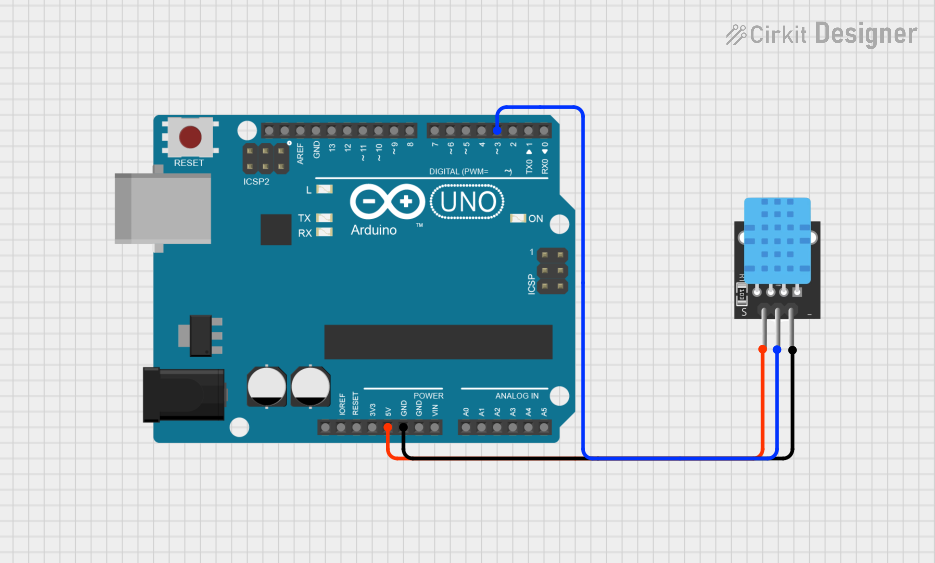
This circuit consists of an Arduino UNO microcontroller connected to a KY-015 DHT11 temperature and humidity sensor. The Arduino is programmed to read the temperature and humidity data from the DHT11 sensor via digital pin D3 and output the readings through its serial interface. The sensor is powered by the 5V and GND pins of the Arduino, ensuring it has the necessary operating voltage.
 Open Project in Cirkit Designer
Open Project in Cirkit DesignerArduino UNO with DHT11 Temperature and Humidity Sensor
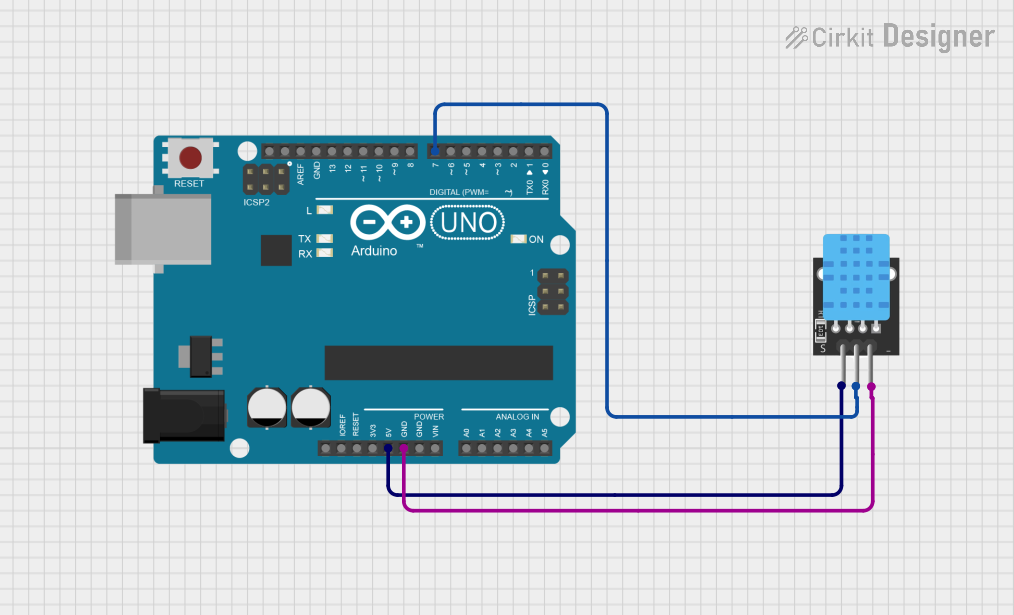
This circuit consists of an Arduino UNO microcontroller connected to a KY-015 DHT11 temperature and humidity sensor. The Arduino provides 5V power and ground to the sensor and reads data from it through digital pin D7. The embedded code initializes the sensor and continuously reads temperature and humidity values, which can be processed or displayed as needed.
 Open Project in Cirkit Designer
Open Project in Cirkit DesignerArduino UNO with DHT11 Temperature and Humidity Sensor
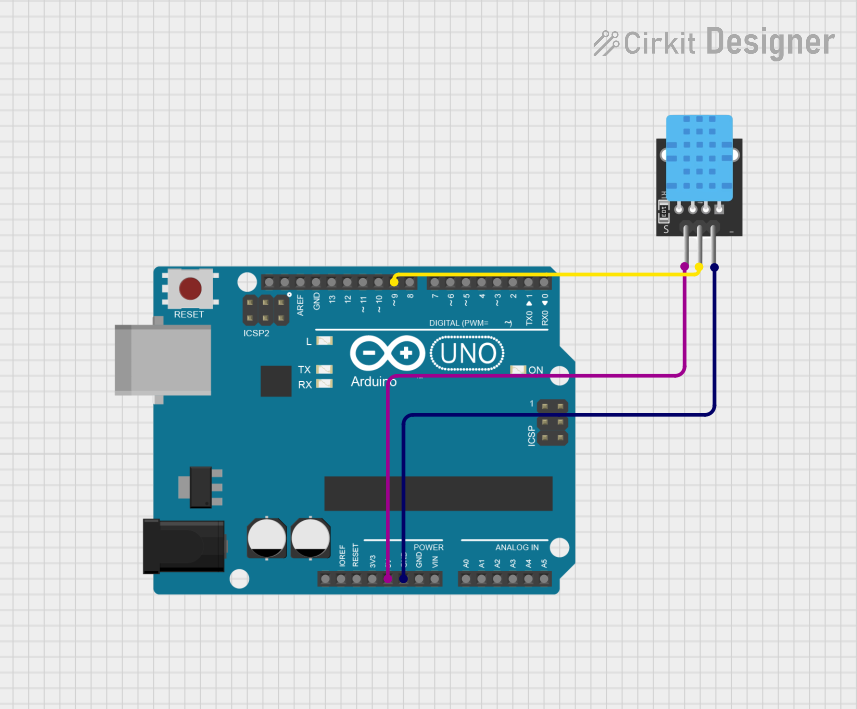
This circuit consists of an Arduino UNO microcontroller connected to a KY-015 DHT11 temperature and humidity sensor. The Arduino provides 5V power and ground to the sensor and reads the sensor's output from digital pin D9. The embedded code on the Arduino is configured to periodically read the temperature and humidity data from the DHT11 sensor and output the readings to the serial monitor.
 Open Project in Cirkit Designer
Open Project in Cirkit DesignerExplore Projects Built with KY-015 DHT11 Temperature-Humidity sensor module

ESP32 and DHT11 Wi-Fi Connected Temperature and Humidity Web Server
This circuit consists of an ESP32 Devkit V1 microcontroller connected to a KY-015 DHT11 Temperature-Humidity sensor module. The ESP32 reads temperature and humidity data from the DHT11 sensor and serves this data via a web server, allowing remote monitoring over WiFi.
 Open Project in Cirkit Designer
Open Project in Cirkit Designer
Arduino UNO with DHT11 Temperature and Humidity Sensor
This circuit consists of an Arduino UNO microcontroller connected to a KY-015 DHT11 temperature and humidity sensor. The Arduino is programmed to read the temperature and humidity data from the DHT11 sensor via digital pin D3 and output the readings through its serial interface. The sensor is powered by the 5V and GND pins of the Arduino, ensuring it has the necessary operating voltage.
 Open Project in Cirkit Designer
Open Project in Cirkit Designer
Arduino UNO with DHT11 Temperature and Humidity Sensor
This circuit consists of an Arduino UNO microcontroller connected to a KY-015 DHT11 temperature and humidity sensor. The Arduino provides 5V power and ground to the sensor and reads data from it through digital pin D7. The embedded code initializes the sensor and continuously reads temperature and humidity values, which can be processed or displayed as needed.
 Open Project in Cirkit Designer
Open Project in Cirkit Designer
Arduino UNO with DHT11 Temperature and Humidity Sensor
This circuit consists of an Arduino UNO microcontroller connected to a KY-015 DHT11 temperature and humidity sensor. The Arduino provides 5V power and ground to the sensor and reads the sensor's output from digital pin D9. The embedded code on the Arduino is configured to periodically read the temperature and humidity data from the DHT11 sensor and output the readings to the serial monitor.
 Open Project in Cirkit Designer
Open Project in Cirkit DesignerTechnical Specifications
Key Technical Details
| Parameter | Value |
|---|---|
| Operating Voltage | 3.3V - 5.5V |
| Operating Current | 0.3mA (measuring) |
| Temperature Range | 0°C to 50°C |
| Humidity Range | 20% to 90% RH |
| Temperature Accuracy | ±2°C |
| Humidity Accuracy | ±5% RH |
| Signal Output | Digital |
| Response Time | 1 second |
Pin Configuration and Descriptions
| Pin Number | Pin Name | Description |
|---|---|---|
| 1 | VCC | Power supply (3.3V - 5.5V) |
| 2 | DATA | Digital signal output |
| 3 | NC | Not connected |
| 4 | GND | Ground |
Usage Instructions
How to Use the Component in a Circuit
- Power Supply: Connect the VCC pin to a 3.3V or 5V power supply.
- Ground: Connect the GND pin to the ground of the power supply.
- Data Signal: Connect the DATA pin to a digital input pin on the microcontroller (e.g., Arduino UNO).
Example Circuit Diagram
KY-015 DHT11 Module
-------------------
VCC -> 5V (Arduino)
DATA -> Digital Pin 2 (Arduino)
GND -> GND (Arduino)
Important Considerations and Best Practices
- Ensure the sensor is placed in an environment within its operating range (0°C to 50°C and 20% to 90% RH).
- Avoid placing the sensor in direct sunlight or near heat sources to prevent inaccurate readings.
- Allow the sensor to stabilize for a few seconds after powering up before taking readings.
Arduino UNO Example Code
#include <DHT.h>
#define DHTPIN 2 // Digital pin connected to the DHT11 sensor
#define DHTTYPE DHT11 // DHT11 sensor type
DHT dht(DHTPIN, DHTTYPE);
void setup() {
Serial.begin(9600);
dht.begin();
}
void loop() {
delay(2000); // Wait a few seconds between measurements
float humidity = dht.readHumidity();
float temperature = dht.readTemperature();
// Check if any reads failed and exit early (to try again).
if (isnan(humidity) || isnan(temperature)) {
Serial.println("Failed to read from DHT sensor!");
return;
}
Serial.print("Humidity: ");
Serial.print(humidity);
Serial.print(" %\t");
Serial.print("Temperature: ");
Serial.print(temperature);
Serial.println(" *C");
}
Troubleshooting and FAQs
Common Issues Users Might Face
- No Data Output: Ensure all connections are secure and the sensor is powered correctly.
- Inaccurate Readings: Check the environment for factors that might affect the sensor, such as direct sunlight or heat sources.
- Failed to Read from Sensor: This can be due to incorrect wiring or a faulty sensor. Double-check the connections and try using a different sensor.
Solutions and Tips for Troubleshooting
- Check Connections: Verify that all connections are correct and secure.
- Power Supply: Ensure the sensor is receiving the correct voltage (3.3V - 5.5V).
- Stabilization Time: Allow the sensor to stabilize for a few seconds after powering up before taking readings.
- Library Compatibility: Ensure you are using a compatible library for the DHT11 sensor (e.g., the DHT library for Arduino).
By following this documentation, users should be able to effectively integrate and utilize the KY-015 DHT11 Temperature-Humidity Sensor Module in their projects.